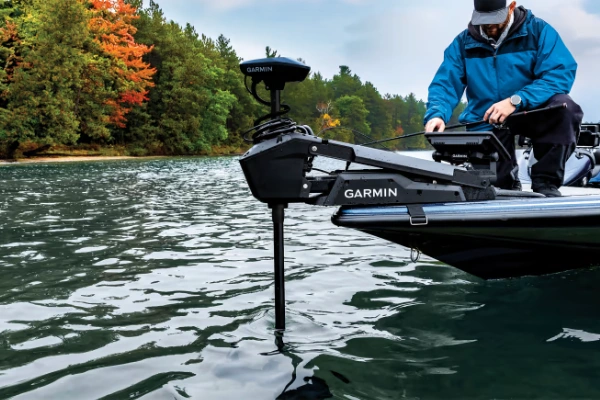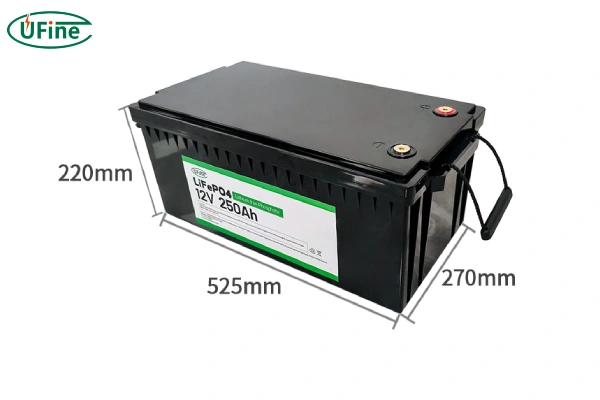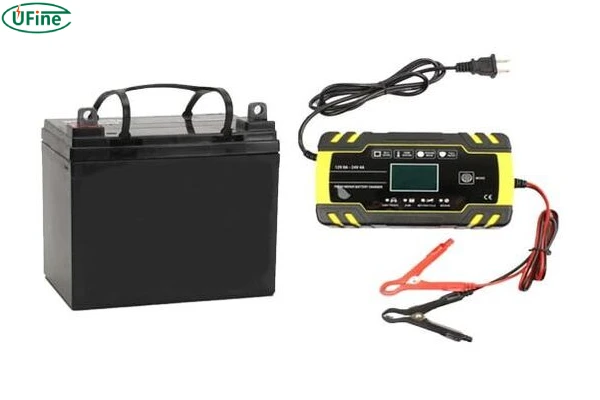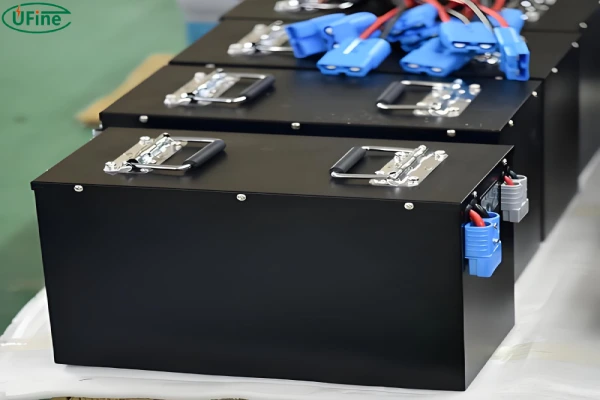Choosing the best trolling motor battery can be challenging, especially with so many options available. This guide will help you navigate the different types of batteries, key performance specifications, and how to choose the right one for your needs. Additionally, we’ll cover essential charging tips and answer common questions to ensure you get the most out of your trolling motor battery.
Part 1. What is the trolling motor battery?
A trolling motor battery is a specialized power source designed to run the electric trolling motor on your boat. Unlike standard car batteries, trolling motor batteries are built to provide consistent power over extended periods, allowing you to fish or cruise for hours without interruption. They are designed to withstand deep discharges, which means they can be drained and recharged many times without significant damage. This makes them essential for anyone looking to enjoy prolonged periods on the water.
Part 2. Trolling motor battery type
Choosing the right type of trolling motor battery is crucial. Let’s explore the most common types and their pros and cons.
1. Trolling Motor Lead-Acid Battery
- Advantages: Lead-acid batteries are the most affordable option. They are widely available and have been used for decades.
- Disadvantages: These batteries are heavy and have a shorter lifespan compared to other types. They also require regular maintenance, such as checking water levels.
- Comparison: Lead-acid batteries are suitable for those on a budget and who do not mind some upkeep.
2. Trolling Motor AGM (Absorbent Glass Mat) Battery
- Advantages: AGM batteries are maintenance-free and spill-proof. They generally have a longer lifespan than traditional lead-acid batteries. They also perform better in cold weather.
- Disadvantages: The main drawback is the higher cost compared to lead-acid batteries.
- Comparison: AGM batteries are ideal for boaters looking for a hassle-free and safe option.
3. Trolling Motor Lithium-Ion Battery
- Advantages: These batteries are lightweight, have a long lifespan, and charge quickly. They can handle many more charge cycles than lead-acid or AGM batteries.
- Disadvantages: The initial cost is significantly higher. However, they can be more cost-effective in the long run due to their longevity.
- Comparison: Lithium-ion batteries are best for serious anglers who need efficient, long-lasting power and don’t mind the upfront investment.
If you’re looking for the ultimate option, it’s worth your time to look into lithium(LiFePo4) trolling motor batteries. Lithium batteries are superior to lead acid wet cells and AGM batteries. They offer longer life and deep cycle capabilities while maintaining power without maintenance.
Marine lithium batteries last up to 10 times longer than lead-acid while still delivering 80% of their rated capacity over 2,000 miles. Fast charging times will ensure you get the most out of your adventure.
Lithium batteries provide superior energy compared to other options and weigh about half as much.
Part 3. Best trolling motor battery performance specifications
When selecting the best trolling motor battery, consider the following performance specifications:
- Voltage: Trolling motors typically use 12V, 24V, or 36V batteries. The required voltage depends on your motor’s specifications.
- Capacity (Ah): Amp hours (Ah) indicate how long the battery can provide power. Higher Ah means more extended running time.
- Reserve Capacity (RC): This is the number of minutes a fully charged battery can deliver 25 amps before the voltage drops below 10.5 volts.
- Weight: Consider the weight of the battery, especially if you need to move it frequently.
- Dimensions: Ensure the battery fits in the battery compartment of your boat.
Part 4. How to choose the right trolling motor battery?
Selecting the right trolling motor battery involves several factors:
- Boat Size and Weight: Larger boats require more powerful batteries to move efficiently.
- Usage Duration: If you plan on long fishing trips, opt for a battery with higher capacity (Ah).
- Budget: While lead-acid batteries are cheaper upfront, AGM and lithium-ion batteries offer better long-term value.
- Maintenance Needs: AGM and lithium-ion batteries require less maintenance compared to lead-acid batteries.
- Availability: Consider the availability of the battery type in your local area for ease of replacement and service.
Part 5. Understand trolling motor battery charging
1. Trolling Motor Battery Charging
Trolling motors rely on deep-cycle batteries to power them during use on the water. To maintain the health and longevity of the trolling motor battery, it’s important to follow proper charging procedures.
- After each use, the battery should be recharged fully. Leaving the battery partially discharged can lead to sulfation, which reduces the battery’s capacity over time.
- Use a dedicated trolling motor battery charger designed for deep-cycle batteries. These chargers have special charging algorithms to prevent overcharging and ensure a complete, balanced charge.
- Charge the battery in a well-ventilated area, as the charging process can produce hydrogen gas.
- Monitor the battery’s charge level and stop charging once the battery is fully charged, typically indicated by the charger switching to a maintenance or float mode.
- If the battery is not going to be used for an extended period, store it in a cool, dry place and recharge it every 4-6 weeks to prevent self-discharge.
2. Trolling Motor Battery Chargers
There are several types of trolling motor battery chargers available on the market:
- Onboard Chargers: These are integrated into the trolling motor and automatically charge the battery when the motor is plugged into a power source.
- Portable Chargers: Standalone chargers that can be transported and used to charge the trolling motor battery separately from the motor.
- Multi-Bank Chargers: Chargers that can simultaneously charge multiple batteries, allowing you to charge all your trolling motor batteries at once.
- Automatic/Smart Chargers: These chargers have advanced features like multi-stage charging, temperature compensation, and automatic shut-off to prevent overcharging.
- Charger Specifications: When selecting a trolling motor battery charger, consider factors like the battery type (lead-acid or lithium-ion), voltage, and amperage output to ensure compatibility and efficient charging.
Some chargers also offer additional features like built-in battery monitors, USB charging ports, or the ability to charge multiple battery types.
Part 6. When to replace my trolling motor battery?
Here are some tips on when to replace your trolling motor battery:
- Age of the battery – Trolling motor batteries typically last 2-3 years with regular use and proper care. If your battery is older than that, it’s probably time to replace it.
- Reduced runtime – If your trolling motor doesn’t seem to be running as long as it used to on a single charge, that’s a sign the battery is wearing out.
- Difficulty charging – If the battery takes much longer to charge fully or won’t hold a charge well, that indicates the battery is nearing the end of its lifespan.
- Visible damage – Check the battery for any cracks, leaks, or other physical damage. If you see signs of wear, it’s better to replace it proactively.
- Sulfation – Over time, lead-acid trolling motor batteries can develop a buildup of lead sulfate on the plates, reducing their capacity. This is another reason to replace an older battery.
- Reduced power – If your trolling motor just doesn’t seem to have the same power and thrust as it once did, the battery is likely the culprit.
The bottom line is, don’t wait until your trolling motor battery completely dies. Replace it proactively every 2-3 years or when you notice significant performance degradation.
Part 7. Is best trolling motor battery the deep cycle battery?
Let me explain why deep cycle batteries are the best choice for trolling motors:
Deep cycle batteries are specifically designed for applications that require repeated discharging and recharging, like with trolling motors.
Deep cycle batteries have thicker, more robust plates that can handle being repeatedly drained down and then recharged. This prevents damage and gives them a much longer lifespan compared to standard batteries.
When you’re out on the water, your trolling motor is constantly drawing power from the battery. Deep cycle batteries can handle those repeated, deep discharges without wearing out quickly.
So for the best performance and longest life for your trolling motor, you’ll definitely want to use a dedicated deep cycle battery. They cost a bit more upfront, but they’ll save you money in the long run by lasting much longer.
Related Tags:
More Articles
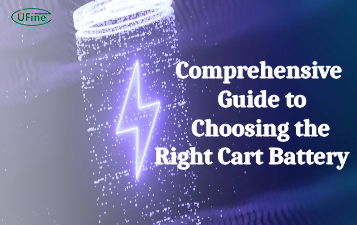
Comprehensive Guide to Choosing the Right Cart Battery
Choosing the right cart battery ensures optimal performance and longevity. This guide covers cart battery types and helps you make an informed choice.
The Ultimate Guide to 18650 Button Top Battery
18650 button top batteries are popular for their high energy density and reliability. This guide covers their key features, usage, and maintenance tips.
The Power of Slim: Unveiling the Potential of Flat Lithium Ion Battery
Flat lithium-ion batteries power devices from phones to vehicles. This article explores their design, benefits, types, applications, charging, and safety.
The Comprehensive Guide to Battery Balancing and Battery Balancer
Battery balancing and balancers optimize performance, longevity, and safety. This guide covers techniques and tips for choosing the right balancer.
10 Key Facts About Drone Battery for 2024
Uncover crucial insights with "10 Key Facts About Drone Battery for 2024." Learn the latest trends and essential details on drone batteries.
